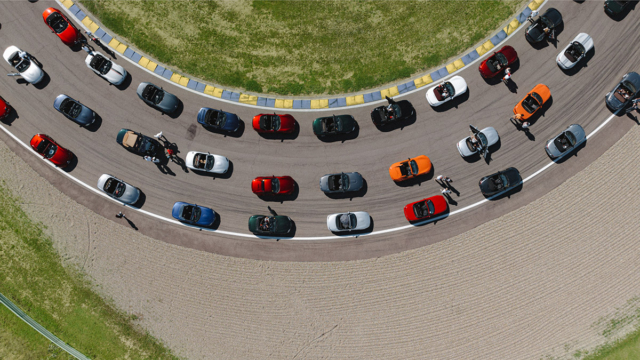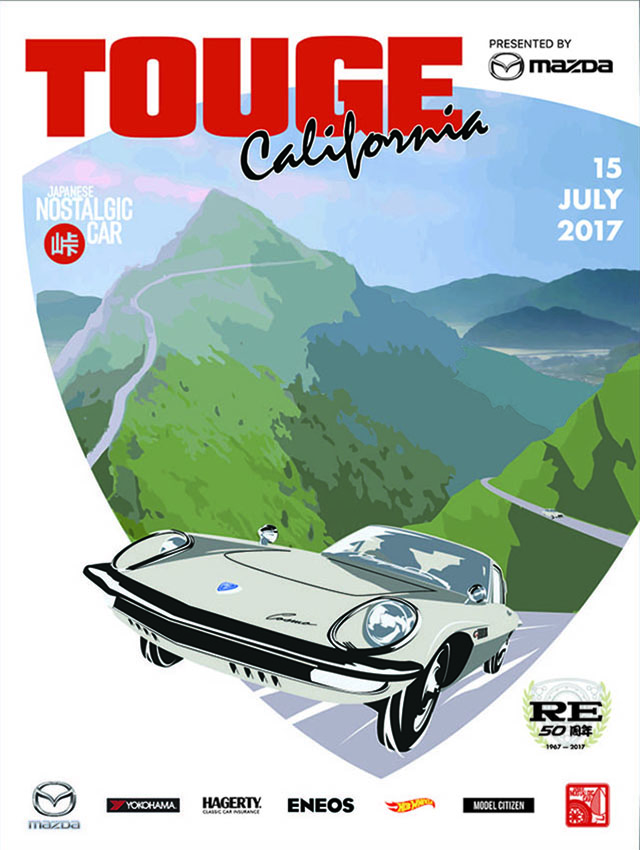When answering the question of what defines the Mazda Miata, chief technology officer Ryuichi Umeshita just laid down what might go down as one of the great quotes of automotive history: “I would say the most important thing is that it is lightweight. And that the second most important thing is that it is lightweight.” It echoes the great motto by Lotus founder Colin Chapman, “Simplify, then add lightness.”
As if that didn’t make the Mazda Roadster team’s prime directive crystal clear during an interview with Road & Track, Umeshita followed up with, “That is the key — whatever the future of the MX-5 is, it must be very light.” This maxim should be music to the ears of motoring enthusiasts.
The wide-ranging dialog with Mazda execs provided encouraging news about the next-generation Miata, and even more choice quotes. Here’s head of design Masashi Nakayama, who led the ND generation’s design, pushing back against simpletons who demanded moar focus group-think staples:
When I started designing the fourth generation, there was a request from the United States to make the car bigger, and to increase the power of the vehicle. I said, “Do you really want a Harley-Davidson?”
Umeshita remains adamant that current power-to-weight ratio is enough. As a reminder, the 2.0-liter ND makes 181 horsepower and weighs 2366 pounds. His reasoning is that drivers should be able to fully enjoy the engine. In other words, Mazda is not going to make the next-gen, likely called the NE, any faster.
However, it may get a larger-displacement engine of 2.5 liters, likely a version of the mill currently used in the Mazda 3. The reason is that in order to comply with emissions standards around the globe, Mazda will need to employ its SkyActiv Z technology, which metes out super-precise fuel-air ratios tailored to the exact engine speed. This reduces power, so displacement must be increased.
The other way to keep the same power-to-weight ratio is to make it lighter. Nakayama told R&T that they’re trying to keep the NE under one ton (2200 lbs) and less than 157 inches long (the current Miata is 154 inches). If they can keep to that it’ll be even closer to the original NA’s weight, an impressive feat considering the safety equipment that modern cars must have.
Light weight is always the guiding principle for the team. Nakayama also said that when choosing between two potential parts build a Miata with, they will typically choose the lightest. As such, there will be no turbo or supercharging, and internal combustion is still the weapon of choice.
Of course, Mazda must prepare for the future. “If all internal combustion engines were banned, then we would have no choice,” Umeshita said. Engineers are exploring what an EV Miata could entail, but internal combustion is the preferred option due to its lightness. For the record, Umeshita still commutes in a Roadster to work, though the article didn’t specify which generation, and Nakayama and CEO Masahiro Moro are part of a racing team that campaigns an ND in Japan.
Prioritizing lightness and driving feel flies in the face of current industry trends: electrification, SUV-ification, justification from far richer companies for why they can’t build a sports car. Regardless of where the NE lands, the quotes are refreshing for underlining just how committed Mazda is to the Miata’s soul. They are fighting the good fight, and that’s what will be remembered by enthusiasts for many years to come.










Having owned both a Lotus & and NA, really on point.
Hiroshima Lotus! An NA is like a polished Elan.
I absolutely love the Harley quote.
Wonder news really. I always find it add that my BRZ is referred to as a “lightweight”. It’s just over 2800 lbs. There is nothing light about it.
I guess I should have had my coffee first before typing so early in the morning.
Let me try that again…
Wonderful new really, I always find it odd that…
Anything under 3,000 lbs is considered lightweight these days.
… Miata (aka MX-5 and Roadster) is not the only one who would have been affected by that of Trump’s already-introduced reciprocal tarrifs, “electrification” / “hybridization” (as in as well as “sustainability”) and even increase of sizes of cars (which is hence car bloat), in addition to that Miata / MX-5 / Roadster is rarely picked and embraced by people (motorists) in Europe / UK / Ireland for ex. over others which are were in the same type of segment / class as the Mazda product (for examples from Mercedes-Benz and BMW as former’s SLK is no longer in production and latter’s Z4) as well as the fact Mazda and its said roadster (because they’re Japanese) are neither available nor marketed in South Korea – due to latter having troubles (history-wise) with Japan, but also cars (especially non-Japanese ones) that have been running for a long time (even after Miata’s introducion) like Jeep’s Wrangler – which is also offered without a roof on – and Renault Clio aka Renault Lutecia in Japan (it wasn’t offered without a roof but its mechanically-identical sibling Renault Wind was as well as the mid-engined Renault Sport Spider) are even affected by those things too, except that Clio / Lutecia is not sold in US (but Nissan’s Versa and Sentra does since they share the same bits as Clio / Lutecia) and mind ourselves that Renault and Peugeot are no longer present in America since between mid-late 1980s to early 1990s. (Alfa Romeo, another roadster creator, followed suit in the same 1990s just decades after Fiat and Citroen pulled out of United States.)
Another curiosity with Mazda and Miata is that idea of shifting the latter into a rugged front-engine, front-wheel drive (FF) layout sports car / roadster (like Peugeot RCZ) would have also helped Mazda to follow the footsteps of those who’ve been making cars for rough conditions, off-roaders that is especially when being front-wheel driven is the only option, similar to those developed by Renault and Peugeot (as well as Fiat) when their cars are seen as they’re striving to survive in North Africa and its rough terrain. Plus, Miata and Wrangler aren’t those vehicles who possess lightness while they have differences, as I’ve even read that Renault’s Alpine A110 (the original) was also lightweight but managed to thrive in the toughest conditions as shown by the fact that Renault and A110 were the first to win World Rally Championship (WRC) – so this may suggest that Renault’s reputation for bathing their lightweight vehicles in the rough hsve helped it (Renault) take over AMC and thus install that experience into Jeeps. (If there’s anything to fight EVs, maybe as Mazda has limited presences in Europe / Britain, probably an idea of restomodding an NA MX-5 would have that Miata trade its RWD-centered running gear for a Renault 5 chassis being shoehorned with a Renault diesel engine mated to a Toyota automatic transmission, and that may have an NA Miata looks like an ovoid and FF Wrangler then.)
But in addition, I think as given that Mazda does not even have the money nor the minds to be a whale, unlike others, then probably if its (Mazda’s) shareholder / owner Toyota were to acquire shares in Honda, Renault Group and Stellantis for the same way it (Toyota) did with not just Mazda, then if Toyota were to begin buying sharea and / or extend a partnership with Stellantis as an MOU (similar to Hyundai with General Motors last year) likewise Toyota woukd accept a decision to market Stellantis (especially Jeep) vehicles in showrooms owned by Toyota and that of Subaru, Mazda and Suzuki. (In fact, Suzuki in Japan distributed Peugeot cars there in the late 1980s / early 1990s, while Mazda did the same with Citroen and Lancia models too, so I think that would suggest an MX-5 / Miata may have a meeting with a “Jeep” as well…)
I read that article from Road & Track, and I admire how those Mazda execs still have a place in their heart for us minorities. They could easily cater to the masses as well as the magazines that comment on the car being only suitable for certain waist sizes, but Mazda continues to focus on the fundamental: less. They honestly care about the overall driving experience and less so on sheer numbers (besides weight).
I understand it’s important to care for our environment, but appreciate Mazda pushing for solely ICE propulsion. Hopefully the 2.5l engine won’t be too heavy, and that we still have 7,000+ redline.
Looking forward to seeing the NE.
That is music to drivers’ ears!
I do not care for the car’s total lenght, the car’s feel is mostly affected by its wheelbase. That said, keeping it short surely is for the best.
The harley-davidson quote is hilarious, and it leads to more thoughts, every country will design cars or bikes for its people. USA will want wider, heavier vehicles for road-hugging weight and bigger passengers, and will need more power to bring all that to highway speed. European will make a car smaller and more responsive for their narrower cities and roads, with GTs created to drive from a country to another before flying became commonplace. Asian cars usually are made smaller for their crowded cities, of course, but also for the smaller average size of their people. Even when they make a world car like the Miata, I think we can feel the smallness-first mind they had at the start of the project, and it is that smallness that makes these cars feel like an extension of the driver.
Lightness is indeed it’s own reward.